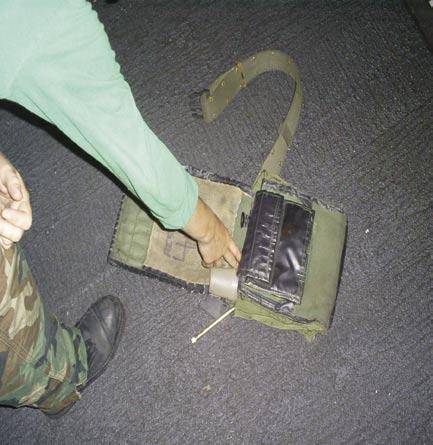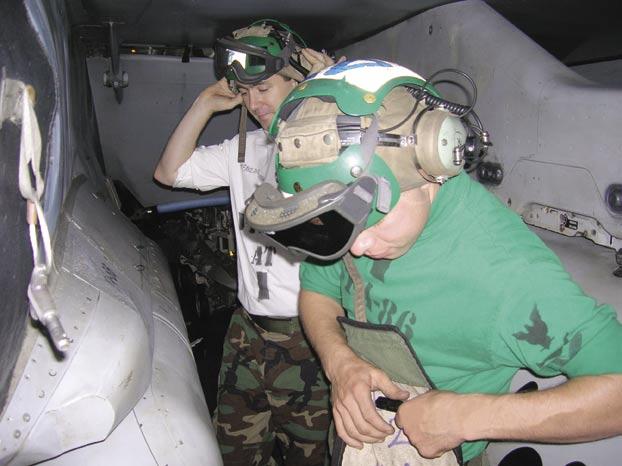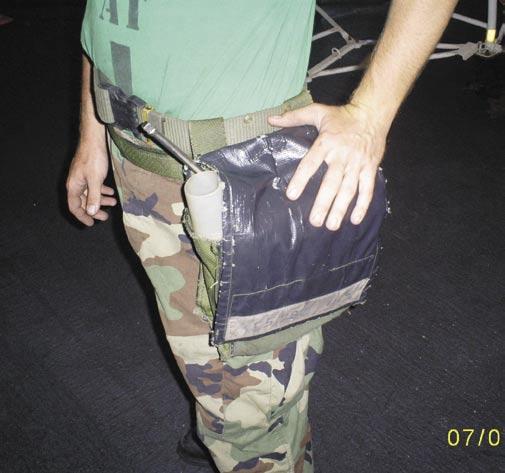
5 minute read
10 Wrongs Don’t Make a Right
By AT1 (AW/SW) Sanchez
Following procedures in any job is very important. Regardless of how large or small each step of a job may seem, there are several reasons why they must be followed. Skipping procedures can lead to some terrible consequences. In this case “10 wrongs,” or missed procedures, unfortunately led to a missing tool, but could have been more serious.
Advertisement
The day began much like any other while deployed on the carrier in the Arabian Gulf for an AT1 of 14
years. I supervised a busy group of highly motivated Sailors, checking tools day in and day out, making every day feel like Groundhog Day. Toward the end of the day, the maintenance-desk chief called to take a 450 lb. ATFLIR pod and exchange it with another ATFLIR pod. Aircraft 403 was scheduled for down traffic to the hangar but had an operational ATFLIR pod. Aircraft 402 had a non-operational pod, but the aircraft was ready to fly. The pod exchange needed to happen quickly, which was no problem for my well-disciplined and experienced crew. After discussing the problem with maintenance control, my second class CDI grabbed a tool pouch, checked the tools and signed them out in the tool log to an AT3. When the AT3 accepted the pouch, she failed to inventory it, trusting instead that the CDI had verified the pouch. Two technicians and I checked out all required support equipment and proceeded to the flight deck. We crossed the landing area and started to work on removing aircraft 403’s pod, but soon realized the job would not be that simple. Eight technicians and one anxious flight-deck coordinator surrounded aircraft 403. Their only mission in life was to turn the aircraft before sending it to the hangar, which meant negotiations between the workcenter LPOs. After a short

debate, we concluded that the pod exchange was more important, so we did a quick ATAF and started the job.
We accomplished download effortlessly because everyone knew how to do the job. With the pod on the skid and ATAF complete, we departed for aircraft 402, making it across the landing area before the next recovery cycle. Once safely across the flight deck, we inventoried the tool pouch again. We began the podexchange process all over again, but, this time, a few more technicians assisted. Instead of maintaining positive control of the tool pouch, we placed it on the deck so that everyone could access the tools. During the installation process, I decided to check the tool pouch again. I noticed that a flathead screwdriver was missing and immediately questioned my technicians. No one confessed to using the tool.
A QAR had taken the flathead screwdriver out of the pouch to help technicians on another task. He must have noticed the commotion because he yelled out, “Calm down! I have the screwdriver.” He returned the tool and the pouch was inventoried again. I thought to myself, “that was pretty scary,” but with everything back in place and accounted for, I felt relieved.
We finally finished the pod removal and installation. I inspected the job and yelled out, “Check Tools!” I checked the tool pouch on the deck, grabbed some of the IMRL gear and returned to the work center. A second class assisted with the IMRL gear, while the other technicians stowed the pods and skids in the “junkyard,” and the AT3 returned the tool pouch to the work center.
After finishing, I entered the work center and immediately began signing off the MAFs before making sure the AT3 had ATAF’d the tool pouch upon her return, which she had not. Minutes later, the nightcheck supervisor came in and started checking tools for shift change. As I was talking to him about the day’s events, he pulled out the tool pouch that we had used
on the ATFLIR pod changes and discovered a 7/16-inch wrench missing. I could not believe it. I had just witnessed all the tools just a little earlier; there is no way that wrench could be missing.
I emptied out the pouch and checked every pocket. Nothing! I returned to the roof with others and checked the area round aircraft 402 and the route the AT3 had taken to get downstairs. Again, nothing! I ran downstairs and called the maintenance desk chief to report the bad news. Even though the search took only five minutes, it seemed like an eternity. We wrote a missingtool report, and an investigation began. I had inspected the job, so I knew the tool wasn’t in the pod. The evening FOD walkdown just had been completed, but we kept searching for the tool. Once again, nothing! The tool never was found.
A few days later and a A good tool pouch and inventory procedures keep tools from three-hour visit with the CO becoming FOD. reminded us that hindsight is very clear. Too many tool-control procedures weren’t helped out with the maintenance action, which is a followed. The entire evolution could have been more direct violation of the NAMP. As a supervisor, you serious than just a missing tool. Upon reflection, here always should directly assign roles before beginning a are the 10 “wrongs” I’ve taken away from this incident: job. • The AT3 never checked her tools when they • I failed as a supervisor to ensure the tool pouch were signed out. Only the AT2 CDI checked them, and came back into the work center and received a final as a supervisor, I failed to ensure the technician also inspection before signing off the MAF. ATAF’d the pouch. • The tool pouch was not inventoried immediately • I did not have to explain how I kept the MIMs upon arrival in the shop. from blowing down the flight deck because manu• The desk chief was not immediately notified of als were not used during the maintenance procedure. the missing tool. When you are doing a complicated job, always bring the • It took the night-check supervisor to discover the required manual for reference. missing tool. • Our tool pouch was placed on the deck, instead • The tool never was recovered. of the technician keeping it strapped to his waist. In this situation, 10 wrongs definitely do not make Always maintain positive control of your tools. a right! Tool-control procedures and maintenance • Someone was able to take a tool without our instruction manuals are here for a reason. Use them all knowledge or permission. Again, this would not have the time and follow procedures. occurred if we had kept control of the tool pouch. • I failed to identify a primary CDI for the job. Petty Officer Sanchez works in the AT shop at VFA-86. Even though I inspected the final installation, I also










